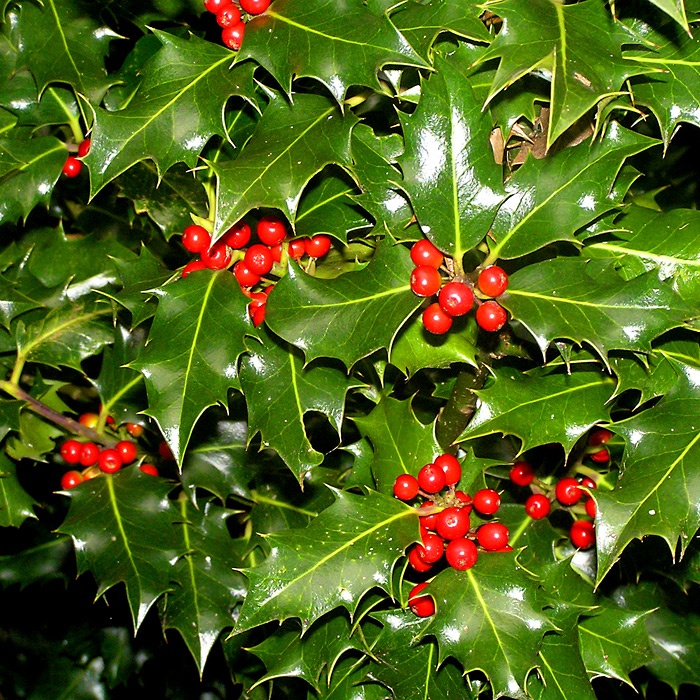#55 HOLLY
Ilex aquifolium

Planted: 2014
Found on the north side of the South Loop.
| Distribution: | Native to the UK and across Europe, North Africa and western Asia. It is common in woodland, scrub and hedgerows; especially in oak and beech woodland. Alternative names: common holly, English holly, European holly, or occasionally Christmas holly |
| Planting Date: | Self sown, probably from the hedge along the southern boundary, of Ilex aquifolium planted by Mr Hammond between 1916 and 1918. Cut down to ground level in 2014 – regrowth is multi-stemmed. |
| Growth Habit: | Small tree or bush |
| Bark: | Smooth and thin with lots of small, brown ‘warts’, and the stems are dark brown. |
| Leaf: | Dark green, glossy and oval. Younger plants have spiky leaves, but the leaves of older trees are much more likely to be smooth. Leaves in the upper parts of the tree are also likely to be smooth. |
| Flowers: | Holly is dioecious, meaning that male and female flowers occur on different trees. Flowers are white with four petals. They bloom any time between early spring and the very beginning of summer, depending on the climate. |
| Fruit: | Once pollinated by insects, female flowers develop into scarlet berries which can remain on the tree throughout winter. |
| Toxicity: | Holly berries are poisonous and may be deadly. Not enough reliable information to know if holly leaves are safe to eat. Known side effects are diarrhea, nausea and vomiting. |
| Potential tree size | Mature trees can grow up to 15m |
| Uses: | The whitest of all woods, heavy, hard and fine-grained. It can be stained and polished and is used to make furniture or in engraving work. It is commonly used to make walking sticks. Makes good firewood and burns with a strong heat. To decorate homes and make wreaths at Christmas. |
| Plant Hunter: | Native |
| Introduction Date: | Native |
| Anecdotes and Comments: | Scientists recently discovered that holly trees adjust their spiky armour in response to hungry animals and changing environments. They can produce some prickly leaves to fend off nibblers while others remain smooth. |